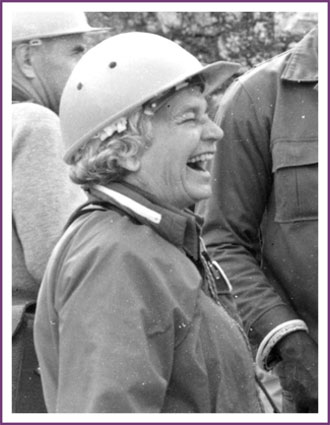RUTH Anne Marie SCHMIDT

• Philanthropy
• Education
• Founded AK Geologist
Inducted: 2015
Deceased: 2014
RUTH Anne Marie SCHMIDT
Ruth Schmidt was a pioneer in the field of geology, pursuing a career as a geologist when few women were accepted into the field. She earned both an M.A. and a Ph.D. in geology from Columbia University. Schmidt was one of the few women to be hired as a geologist by the United States Geological Survey. In 1953 she transferred to Anchorage to open a USGS field office and soon started teaching the first college-level geology courses at Anchorage Community College. Her teaching career spanned 25 years and when she retired, she was chair of the University of Alaska Anchorage Geology Department. Schmidt laid the foundation for today’s University of Alaska Anchorage (UAA) geological science curriculum; designed UAA’s first geology laboratory and helped launch many into professional careers in geology. Additionally, she endowed various scholarships in science at UAA and elsewhere.
As a consulting geologist Schmidt participated in two of Alaska’s major events. After experiencing the epic 1964 earthquake on the ice of Portage Lake, she was selected to coordinate the work of a hastily assembled group of 40 earth scientists charged to assess and map the damage in Anchorage. In 1975 to 1976, she conducted inspections up and down the TransAlaska Pipeline for the Office of the Governor to ascertain compliance with environmental requirements. Schmidt continued well into her eighties to consult on private and public projects throughout the state.
Upon retiring, she devoted a substantial portion of her financial resources to philanthropy, supporting causes such as the environment, the arts and social justice. This generosity was further enhanced by substantial bequests in her will.
Among various honors and memberships, Schmidt was elected a Fellow, American Association for the Advancement of Science; and founder, first president and honorary life member, Alaska Geological Society
View Extended Bio